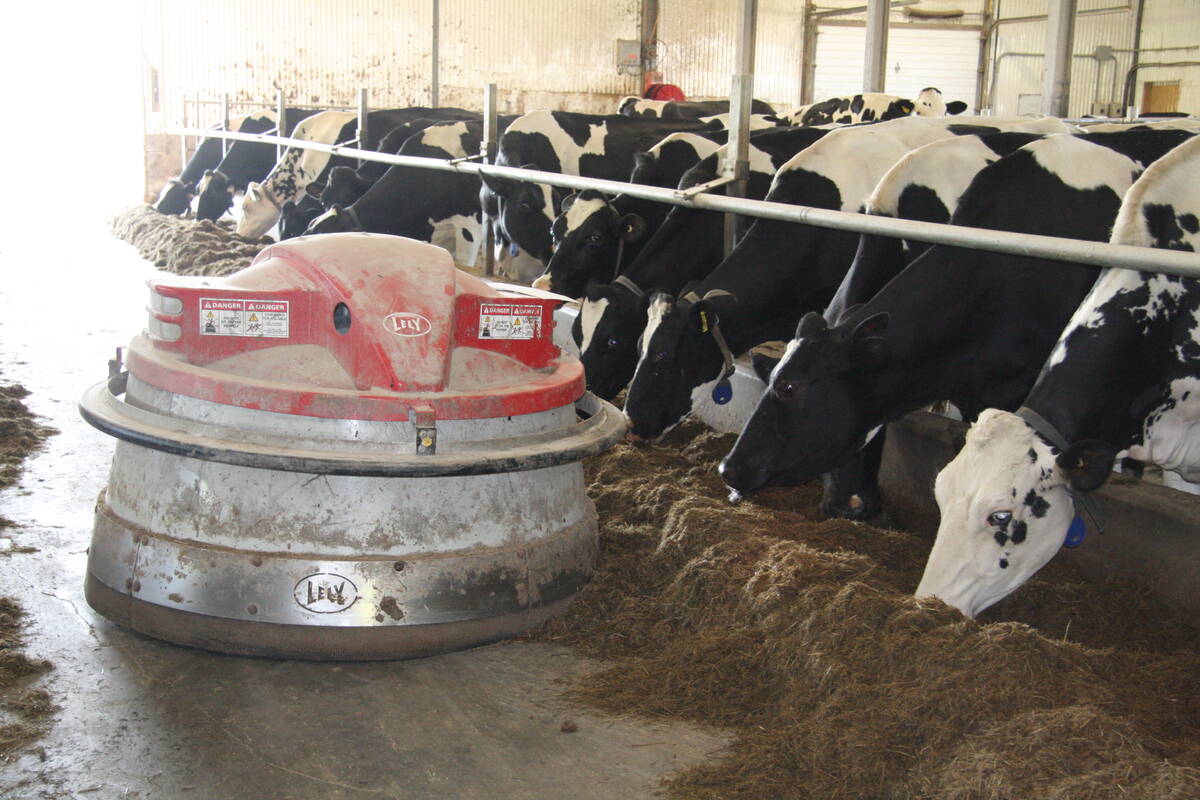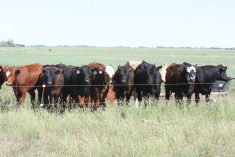The Canadian cattle industry is facing a quandary.
With the global population expected to reach 9.7 billion by 2050, beef production must increase to meet rising demand. On the other hand, there is greater pressure to reduce greenhouse gas emissions in agricultural production.
Environment and Climate Change Canada says agriculture contributes about eight percent of total Canadian greenhouse gas emissions, and enteric methane emissions account for over a third of that total.
But according to Kim Ominski, director of the National Centre for Livestock and the Environment at the University of Manitoba, increasing the acceptance and adoption of hormone implants when raising beef could help solve this problem.
Read Also

Partnerships, communication key to disease management
Communication and strong, trusted partnerships are key to managing infectious diseases like Foot and Mouth Disease and HPAI.
“In the overall lifetime of a calf, they’re going to reach that target end weight quicker, and as a consequence, all those sustainability metrics are going to be lower,” said Ominski.
Ominski shared a stage with Fisher Branch area rancher Betty Green to speak about hormone implants in cattle at the Manitoba Beef and Forage Initiatives Conference in Brandon in December.
Green runs G7 Farms with her husband, Robert, and her grandson. The 600-cow operation began using implants in calves after taking part in a trial 30 years ago in which half of the calves were randomly selected to be implanted.
“And at the end of the year, we were sold. We were really pleased with the results,” said Green.
G7 Farms has been reaping the benefits of that shift in the decades since.
Green shared data that showed the economic benefits of hormone implants. Using current Manitoba auction mart data for pricing animals of 500 to 600 pounds, Green compared income from implanted and non-implanted calves.
Across the board, the growth hormones did what they’re supposed to do. The calves gained weight quicker, and that weight gain added significantly to the operation’s bottom line.
Green said when G7 Farms started using implants, the decision was mostly financial. They hadn’t considered any environmental benefits.
“We were looking at ways to try to increase our returns a little, but since then, we know that there are so many other benefits to it.”
Ominski quantified some of those benefits using data from a study she co-authored. The study, led by Dr. Gabriel Ribeiro, was conducted over four consecutive years, from 2015 to 2018, at the Lethbridge Research and Development Centre feedlot.
“We used the data from this study to examine the environmental impacts of using implants in feedlot cattle,” said Ominski.
The background and finishing study included 120 heifers and 80 steers for the first two years, with an additional 80 steers included in each of the final two years. They backgrounded for 84 days and finished for 148 days.
“We looked at initial and final body weights, average daily gain and days on feed to reach market weight,” Ominski said.
An Agriculture Canada model was used to estimate greenhouse gas emissions. Ammonia emissions, as well as land and water usage, were also estimated.
Researchers discovered a reduction in each of those metrics. There was a three to 10 percent reduction in greenhouse gas emissions per kilogram of boneless beef. They found a five to 11 percent reduction in land use; a five to 11 percent reduction in water use; and a three to eight percent reduction in ammonia emissions.
“We can see from this data that the use of growth-enhancing technologies is really a sustainable strategy to address food security challenges,” said Ominski. “And at the same time, they can decrease greenhouse gas and ammonia emissions, as well as land and water use.”
With the clear economic and environmental benefits, it seems like choosing to use growth hormone implants would be a no-brainer for most farmers.
But according to John Campbell, a University of Saskatchewan professor in large animal clinical sciences, only about one-third of cow-calf farms use the technology in suckling calves and fewer than 20 percent in weaned calves.
Some of the reluctance to adopt the practice is a concern over market access. In the late 1990s, the European Union banned imports of beef produced with the use of added hormones and closed its doors to Canadian beef altogether.
In 2017, when the Canada-Europe Trade Agreement came into effect, it opened the doors to a potential of $600 million (hormone-free) imports from Canada. That might provide an opportunity for producers to access new markets with hormone-free beef, but that market constitutes only 12 percent of the roughly $5 billion in beef that Canada currently exports. That’s not enough to eschew hormone implant use altogether.
There is also domestic consumer skepticism to contend with, some of it fueled by companies like A&W that advertises “hormone-free beef” with the implication that the alternative is unhealthy.
“I think when people hear the word hormone, they automatically think about food safety,” said Ominski, noting most of those fears are overblown.
“There’s very little difference in the estrogen levels between implanted and non-implanted beef and there are many other food products that have a much higher estrogen content than you get from hormone-implanted beef.”
For instance, one 75-gram serving of hormone-implanted beef contains 1.9 nanograms (ng) of estrogen, compared to 1.1 ng in non-implanted beef. But there is 2.1 ng of estrogen in the same-sized serving of chicken and 2.5 ng in a serving of pork.
Changing public perceptions is a challenge. Ominski thinks the public’s concerns over environmental sustainability could be leveraged into greater support for using hormones in beef production.
“We haven’t actually had a lot of conversations with consumers about these sustainability metrics and how food choices could impact sustainability,” said Ominski.
“So, the conversations that we have to have are really around both of those things: the food safety aspects and the sustainability aspects.”
She said there’s opportunity to start those conversations with outreach programs hosted at places like the Bruce D. Campbell Farm and Food Discovery Centre at Glenlea. The Discover the Farm Day held for the last two years at the Centre has provided an opportunity to engage in those conversations.
“Over 1,000 visitors attended this event in 2022 and 2023,” said Ominski. “Visitors never came and said, ‘this is bad.’ They would come and say, ‘I heard that…,’ which means to me we just have a population of people that hasn’t had the privilege of being on a farm.”
She also says sustainability metrics should be reframed. Now, they are framed in the negative, as things that need to be corrected. For example, the farm produces too many greenhouse gases or uses too much water. More focus should be put on the positive things that farms contribute to sustainability, Ominski said.
“We’re really just learning to better describe positive sustainability metrics like carbon sequestration and biodiversity. All of these grasslands, which cannot be turned into cropland, have a tremendous capacity to sequester carbon.
“These are complex issues. It’s not an easy soundbite for the consumer to be able to digest because they’ve never been on a farm,” she said. “So I think that’s our challenge: how do we, in simple sound bites, relay this complex information?”
















